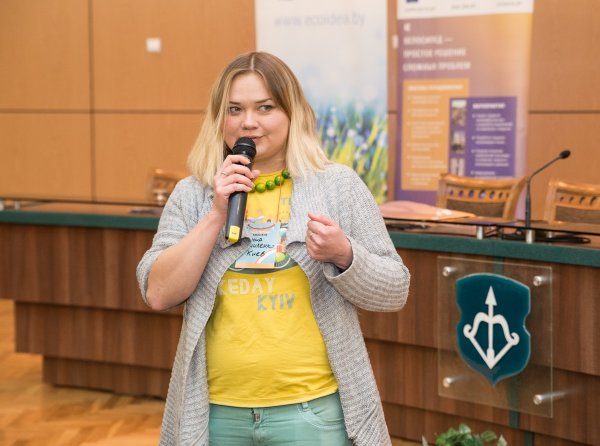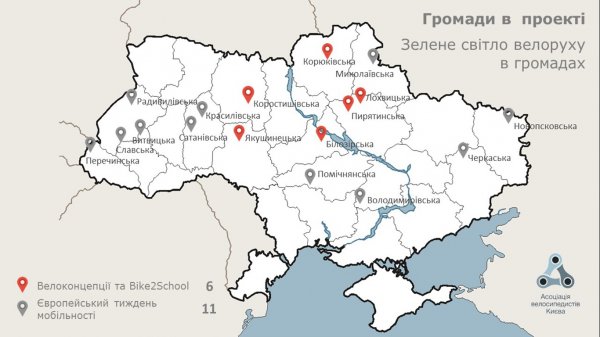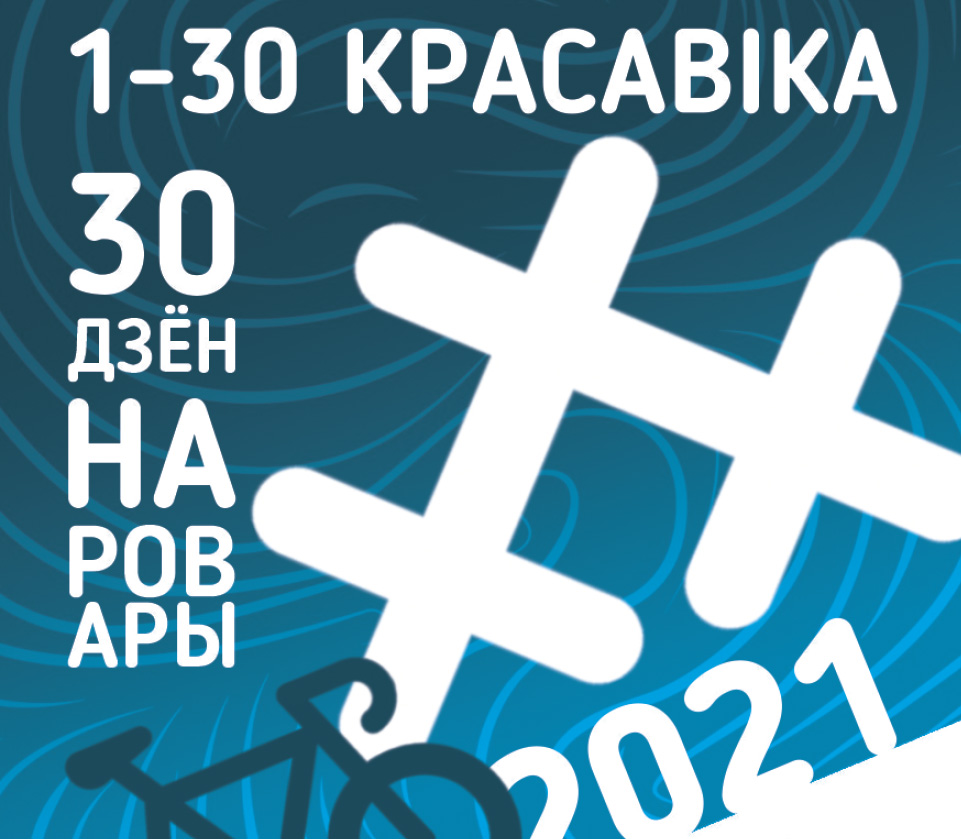An activist wants to change the system and the world for the better, a manager wants to hear bright thoughts and implement them professionally. Participants of the PraRovar forum talk about how they come to an agreement with each other.
An activist wants to change the system and the world for the better, a manager wants to hear bright thoughts and implement them professionally. Participants of the PraRovar forum talk about how they come to an agreement with each other.
Every city dreams of its own Boris Jones
The activists are not what they used to be: they read the general plans and come to the executive committees, insisting on communication. They understand that a specific person is behind every decision in the city.
- The development of the city and the transport system depends on his values, views, interests, - says Pavel Nishchenko, a representative of the Minsk Cycling Society, previously an employee of the design institute "Minskgrad" (link to presentation and video performance).
Pavel moved from a government organization to a public organization less than a year ago and is now establishing communication between the two parties. In particular, Pavel and his colleagues participate in the work of the Council for the Development of Cycling and work on the Strategic Plan for the Development of Cycling Infrastructure until 2020.
- Every cycling city dreams of its own Boris Jones - this is the mayor of London, who had a great love for the bicycle and promoted it in the city. For many years this mayor rode a bicycle, but when he became minister, the security services banned him from cycling because it was unsafe.
We are lucky: Minsk has its own active deputy chairman - Yurkevich, who rides a bicycle and loves him. Probably, thanks to him, a bicycle council was launched in Minsk, - speaks Pavel Nishchenko.
We are lucky: Minsk has its own active deputy chairman - Yurkevich, who rides a bicycle and loves him. Probably, thanks to him, a bicycle council was launched in Minsk, - speaks Pavel Nishchenko.

Photo: Denis Zelenko
What is a City Cycling Council?
The first meeting of the Council took place a year ago with the participation of the Moscow Military District on the initiative of the Minsk City Executive Committee. The Council has a charter, its goals say: at one table it is necessary to bring together all the parties involved in the development of cycling.
The council is held every three months, where current problems are solved, the agenda of the meeting is determined by the Minsk Cycling Society. After the participants draw up and sign the protocol, then they carry out the decisions of the council.
The MBO should also monitor the implementation of the instructions of the board.
- The problems of cyclists are voiced at the city level, but there are also disadvantages: the interaction between the participants is not very well implemented. There is no operator - the city bicycle officer who would control the decisions, - says Pavel Nishchenko.

The future green bicycle route of Minsk. Illustration from the speaker's presentation
Minsk will make a green cycle ring and lower all curbs by 2021
At the last meeting of the Council, the Minsk Strategic Plan for the Development of Cycling was adopted, which indicates the activities, the timing of their implementation and the executors. Its three goals are to end the death of cyclists, increase the number of cyclists and improve the infrastructure for them.
There are plans to create a bicycle rental and a highway in the form of a bicycle ring through the green zones of Minsk and all nine districts of the city, part of the work has already been included in the investment plan of the city.
This is in demand by the townspeople: during rush hours, 250-500 cyclists pass along the busiest cycle path in the city, near the Svisloch, depending on the season and weather. At the beginning of its existence, there were 200 of them a day. Slepyanskaya bike path has already been included in the investment plan of Minsk.
By 2021, Minsk is going to lower all curbs and, perhaps, will soon convince all developers not to forget about bicycle infrastructure in their new projects. The first typical street with bike lanes may soon appear on Vera Khoruzhei Street (the project is being coordinated).

Slide from the speaker's presentation
"Short cycle path" led to the Department of Transport
The opposite path traveled by the previous speaker was Anna Danilenko from Kiev. She works in the bicycle sector of the Department of Transport Infrastructure of the Kiev City State Administration, where she came from activism.
She is the organizer of the All-Ukrainian Cycling Days, the most massive cycling event in Kiev. In the recent past, Anna Danilenko organized many protests, and got into the administration, trying to achieve a safer infrastructure for cyclists.
Obstacles every 50 meters - this is what the bike paths in Kiev looked like in 2013, where they were at all. Curbs, parked cars and people who walked made uninterrupted cycling impossible.
- Do you know that you are standing on the bike path?
- I? On the bike path? Where is the bike path? So she's scanty! - answered pedestrians in one of videosfilmed at that time.
- Do you know that you are standing on the bike path?
- I? On the bike path? Where is the bike path? So she's scanty! - answered pedestrians in one of videosfilmed at that time.
Management activist: "It was difficult for the first 2-3 months"
During the day, the Department of Transport Infrastructure responds to 150-200 letters with a force of 60 people, and this is not counting the maintenance of the transport system of the 5 million city. The department in which Anna is a member must work with the designers, prepare the terms of reference.
- At first, when I came to work, I had an idea to change the system, to tell everyone how to move correctly. I was rather skeptical, in the style of activism, and it was rather difficult in the department for the first 2-3 months, they disliked me. Then I understood why: every organization is a team, where you need to understand motivation and not condemn, - says Anna Danilenko.

Photo: Denis Zelenko
She is engaged in establishing contacts between officials and activists. In the eyes of activists, officials are people who write replies. For them, activists are those who complain on the Internet and collect actions on the street. The meeting of these parties in a public discussion turns, according to Anna, into three hours of shouting. Despite this, she is confident that citizen participation is important:
- You still need to approach people, ask their opinions and negotiate. Although, according to polls, only 11% people have expressed confidence in the state apparatus, and this is a disaster, - says the speaker.
The department, according to Anna Danilenko, arose after the department had a new director.
- Previously, there was no person in the administration who would promote decisions. But after the revolution, adequate people began to work in the city government.
For example, the Department of Architecture has developed a bicycle concept - a strategic document, according to which the bicycle infrastructure in Kiev will be developed, - says Anna Danilenko (link to presentation and video performance).
The department, according to Anna Danilenko, arose after the department had a new director.
- Previously, there was no person in the administration who would promote decisions. But after the revolution, adequate people began to work in the city government.
For example, the Department of Architecture has developed a bicycle concept - a strategic document, according to which the bicycle infrastructure in Kiev will be developed, - says Anna Danilenko (link to presentation and video performance).

Illustration from Anna Danilenko's presentation
“It’s easier to get an appointment in small towns”
And the third speaker is Vadim Denisenko, national coordinator of the Kiev Cyclists Association (link to presentation and video performance). AVK is an activist organization that deals with not only urban, but also national issues.

Photo: Denis Zelenko
As part of the ongoing Green Light for Cycling in Communities project, she is helping small towns in Ukraine improve infrastructure for bicycles, which are essential transportation there.
So far, we are talking about five pilot places with a population of 10-30 thousand, where travel distances are up to 10 kilometers. For them, they develop concepts for the development of cycling infrastructure and cycling. Sometimes AVK even finance the infrastructure itself.
“When we talk about the city government in such places, it’s much easier to get an appointment and make an appointment, because this is not Kiev,” says the AVK coordinator. According to him, it took a couple of years to complete the bike plan in Kiev, in a small city, if you're lucky, it can be dealt with in a few weeks.
“When we talk about the city government in such places, it’s much easier to get an appointment and make an appointment, because this is not Kiev,” says the AVK coordinator. According to him, it took a couple of years to complete the bike plan in Kiev, in a small city, if you're lucky, it can be dealt with in a few weeks.

Red - the cities where AVK helped create a concept for the development of cycling, gray - where they worked to promote the bicycle.
Illustration from the speaker's presentation
AVK ordered the development of a national standard for cycling infrastructure.
“There is a great chance that it will be adopted by the national standardization body and will be used by the designers,” says Vadim Denisenko.

Illustration from the speaker's presentation
The material was prepared within the framework of the Urban Cycling in Belarus project with financial support from the European Union and within the deVELOpment campaign with the assistance of the US Embassy in Belarus.
Text: Anna Volynets







